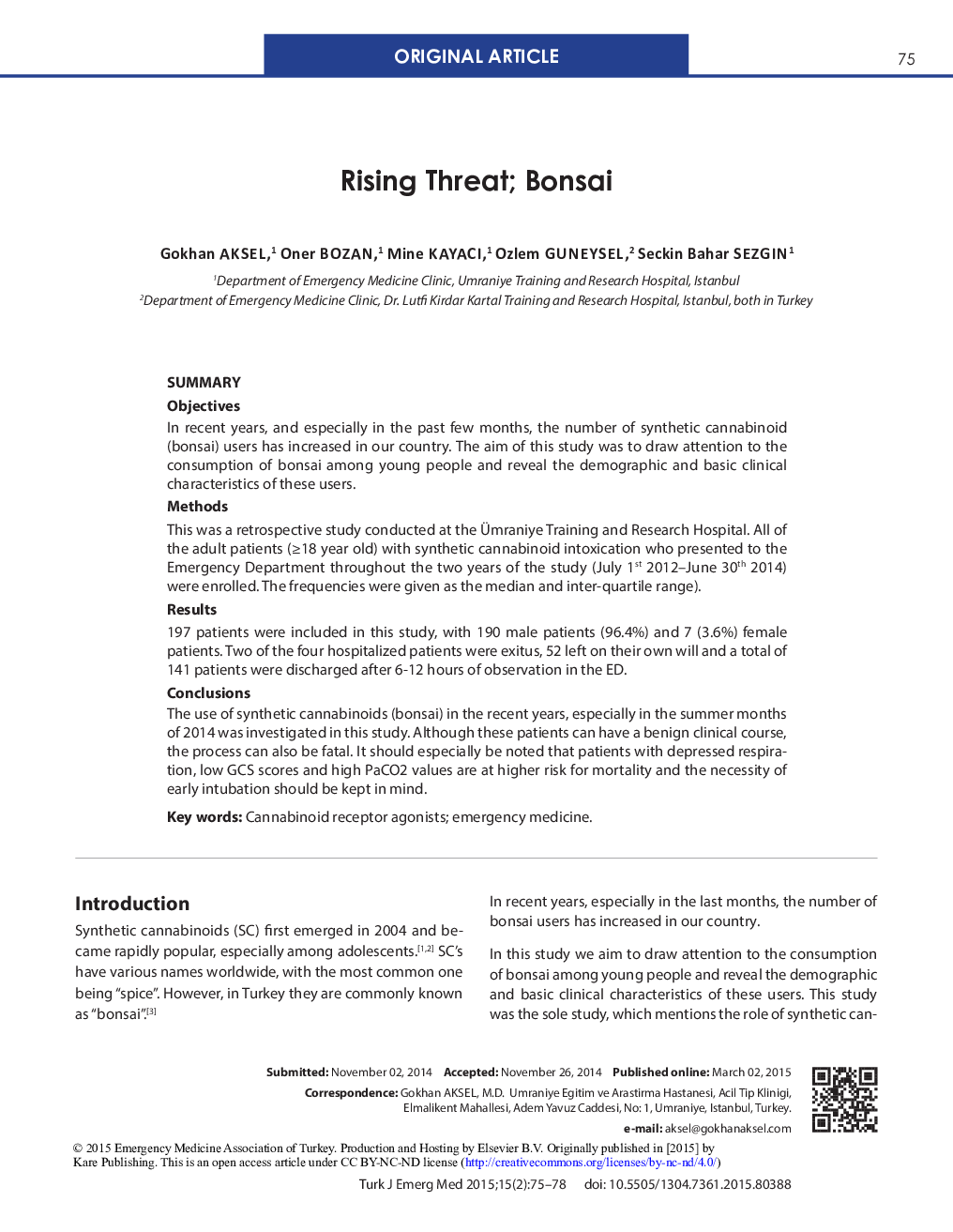| کد مقاله | کد نشریه | سال انتشار | مقاله انگلیسی | نسخه تمام متن |
|---|---|---|---|---|
| 2604058 | 1562732 | 2015 | 4 صفحه PDF | دانلود رایگان |
SUMMARYObjectivesIn recent years, and especially in the past few months, the number of synthetic cannabinoid (bonsai) users has increased in our country. The aim of this study was to draw attention to the consumption of bonsai among young people and reveal the demographic and basic clinical characteristics of these users.MethodsThis was a retrospective study conducted at the Ümraniye Training and Research Hospital. All of the adult patients (≥18 year old) with synthetic cannabinoid intoxication who presented to the Emergency Department throughout the two years of the study (July 1st 2012–June 30th 2014) were enrolled. The frequencies were given as the median and inter-quartile range).Results197 patients were included in this study, with 190 male patients (96.4%) and 7 (3.6%) female patients. Two of the four hospitalized patients were exitus, 52 left on their own will and a total of 141 patients were discharged after 6-12 hours of observation in the ED.ConclusionsThe use of synthetic cannabinoids (bonsai) in the recent years, especially in the summer months of 2014 was investigated in this study. Although these patients can have a benign clinical course, the process can also be fatal. It should especially be noted that patients with depressed respiration, low GCS scores and high PaCO2 values are at higher risk for mortality and the necessity of early intubation should be kept in mind.
Journal: Turkish Journal of Emergency Medicine - Volume 15, Issue 2, June 2015, Pages 75–78
